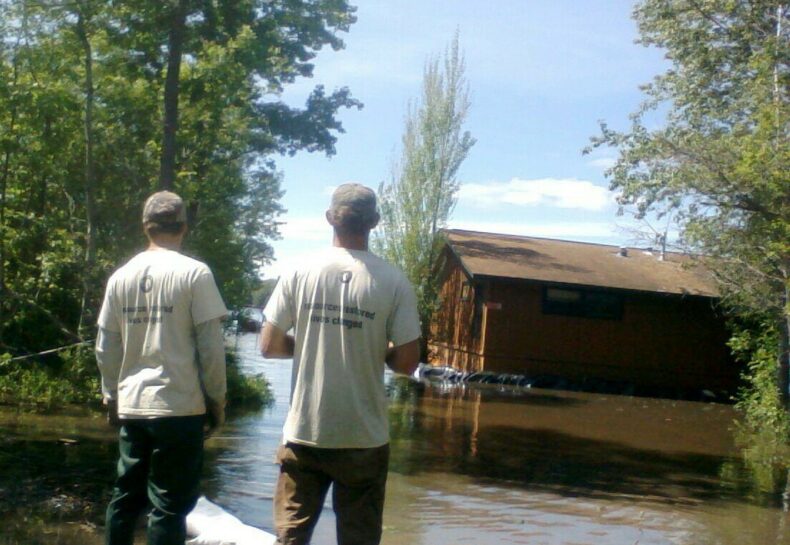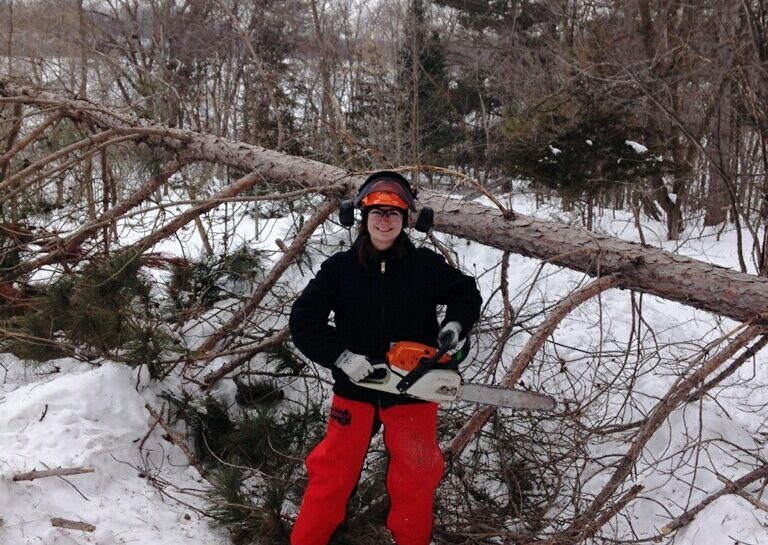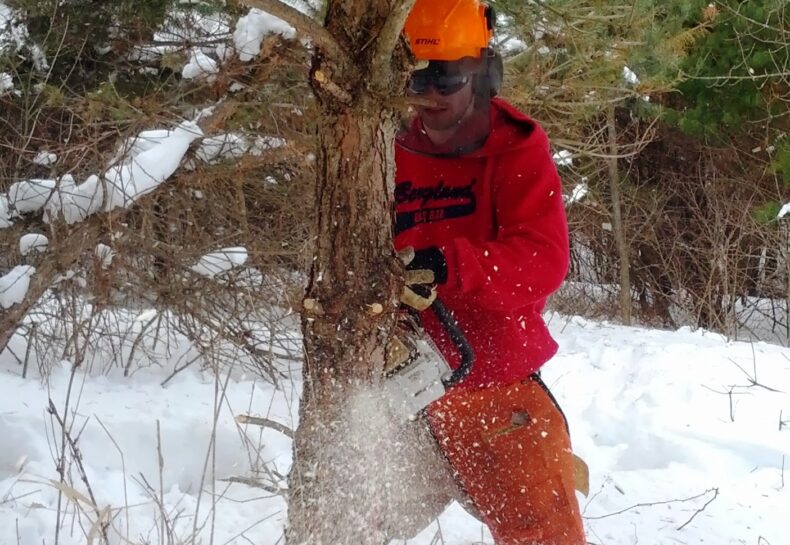Updates & Stories
Floods in the north: A community comes together
What does it mean to be part of a community? If you asked me what it is that the Conservation Corps does four months ago I might have been hard-pressed to give you a straight answer. I believe now, quite strongly, that I know what it means to me to be part of this organization, what we represent, and exactly what it is that we do.An iron-willed individual, with the strength of an ox, could toil his days and nights away in an effort to move a boulder embedded in the ground and not move anything forward but time. A group of individuals with a common objective however, has the ability not only to move the boulder, but to use it as a tool. The newly found inertia of the stone converts to a gravitational pull which attracts more and more people to aid its motion until, before long, the stone that the individual could not move now floats across the ground as if it were weightless. Read More
“Wait, you do WHAT?!”
Over the past two months I’ve gotten a real kick out of seeing friends and family’s reactions to what I’ve been doing lately. In general they either say “I can’t really see you wielding a chainsaw” or “tree killer!” Up until two months ago, I would have to agree with them on the first reaction. Me? Cut down a tree? No way! As for the second reaction, I would have to disagree. While trees and shrubs end up being victims to my chainsaw, I cut them down in the name of conservation and restoration. One of the long-term goals of the Three Rivers Park District is to restore their forested areas to the mix of pre-settlement species. For the first few weeks after various trainings and orientations, the Three Rivers crews spent time at a newly-acquired part of the Lake Rebecca Park Reserve removing invasive species including buckthorn, honeysuckle, and Siberian elm. Read More
Sherburne National Wildlife Refuge [Photo Blog]
My crew and I have had the good fortune of spending the last five weeks working with the U.S. Fish and Wildlife Service at the Sherburne National Wildlife Refuge near Princeton, Minnesota. The refuge covers around 20,000 acres and is a mixture of remnant oak savannah, one of the most threatened ecosystems on the globe, as well as expansive wetlands and oak forest. It is an important breeding ground for many waterfowl and is well-known for its sandhill cranes. Numerous species of migratory birds and native wildlife also find sanctuary within the refuge’s boundaries.Now on our sixth and final week at the refuge, I’m having a hard time waxing poetic in a way that does the experience justice. Luckily, I carry a decent camera around in my pocket; perhaps some photographs can do the job for me. Read More
Lesson 1: Safety, Quality, Quantity
I know what you’re thinking, and you’re probably right. A blog about safety? How boring. I would have to agree. It’s not the most exciting, but by taking safety seriously, heeding all warnings, and wearing proper personal protective equipment (PPE) we can all help ourselves avoid serious harm. With that in mind, just humor me.The Corps values the safety of its members, plain and simple. If I had a dime for every time in the first few weeks I heard the words safety and PPE, I would probably have a fair few dollars to spend. In fact for chainsaw and wildfire training the instructors actually said that if we answered ‘safety’ for questions on the test that we just might receive some credit even if we didn’t know the answer. While that might be a bit of an exaggeration, it illustrates how we are to have situational awareness at all times and be very mindful of our actions; one little kickback of the chainsaw for a novice sawyer can cause a world of hurt. Read More
Starting Cold Engines
I’ve gotta give a shout out to Stihl Chainsaws. At -20F it’s tough to get anything running at all, but with just a few pulls those saws were roaring and it was time to get to work. And so went the winter.I was hired back for another term with the Conservation Corps field crews, this time as the crew leader of the Metro Roving crew. Between the end of the last term and the beginning of the current term, those of us who were hired back worked as an interim crew on a couple of different projects. You may or may not recall but it was a particularly cold winter, the coldest in about 30 years in fact, and hence the coldest winter everyone on the crew has ever experienced. The fact that we continued to get work done each day (save the few that were called off due to dangerously cold temperatures) is testament to the reputation of the Corps and the ethic that is instilled in Corps members. We work smart and we work hard because we believe that our accomplishments are integral in conserving our environment. Read More
New corps members take on the pack test
When was the last time you hiked three miles carrying a 45-pound pack in 45 minutes or less? Young adult corps members must do exactly that to pass the work capacity test ― called the pack test ― administered at the beginning of their service term, immediately following orientation. Read More
Why we do prescribed burns
The past couple of weeks have been good burning weather so we have been doing a lot of prescribed burns in the local state parks. We have burned two bluff prairies in Great River State Park in Nodine, MN. This slanted picture of fire running up hill is the actual gradient of the goat prairie, if you stood straight up you would fall over. Walking down the bottom of this prairie was quite the adventure! Read More
Where Are They Now? Jane Sunram
Though Jane Sunram served in the Corps more than 30 years ago, she still remembers her summer in the Young Adult Conservation Corps as a great opportunity that included hard work and changed her relationship with nature. Her crew was based in cabins at Lake Itasca, working days in the field. Read More
Where Are They Now? Rachel Tooker
Catch up on Rachel Tooker, who served as a crew leader from 2008-2010 in Rochester, MN and Ames, IA. Read More
Where Are They Now? Hollis Emery
It might have been the chainsaw that lured Hollis Emery to northeast Minnesota to serve as a crew leader in 2010. The previous year, she had left a California law firm job to serve EarthCorps in Seattle and was hooked on the Corps experience. Read More


![Sherburne National Wildlife Refuge [Photo Blog]](https://conservationcorps.org/wp-content/uploads/2014/04/QZk72ON5sgKrKtuefuMZFFTlfUvRsmr8-FKy7bs66IQ7Y3VxIRU03ht-Vwx_vUAYcA3Dw1236-h661-790x545.jpg)


